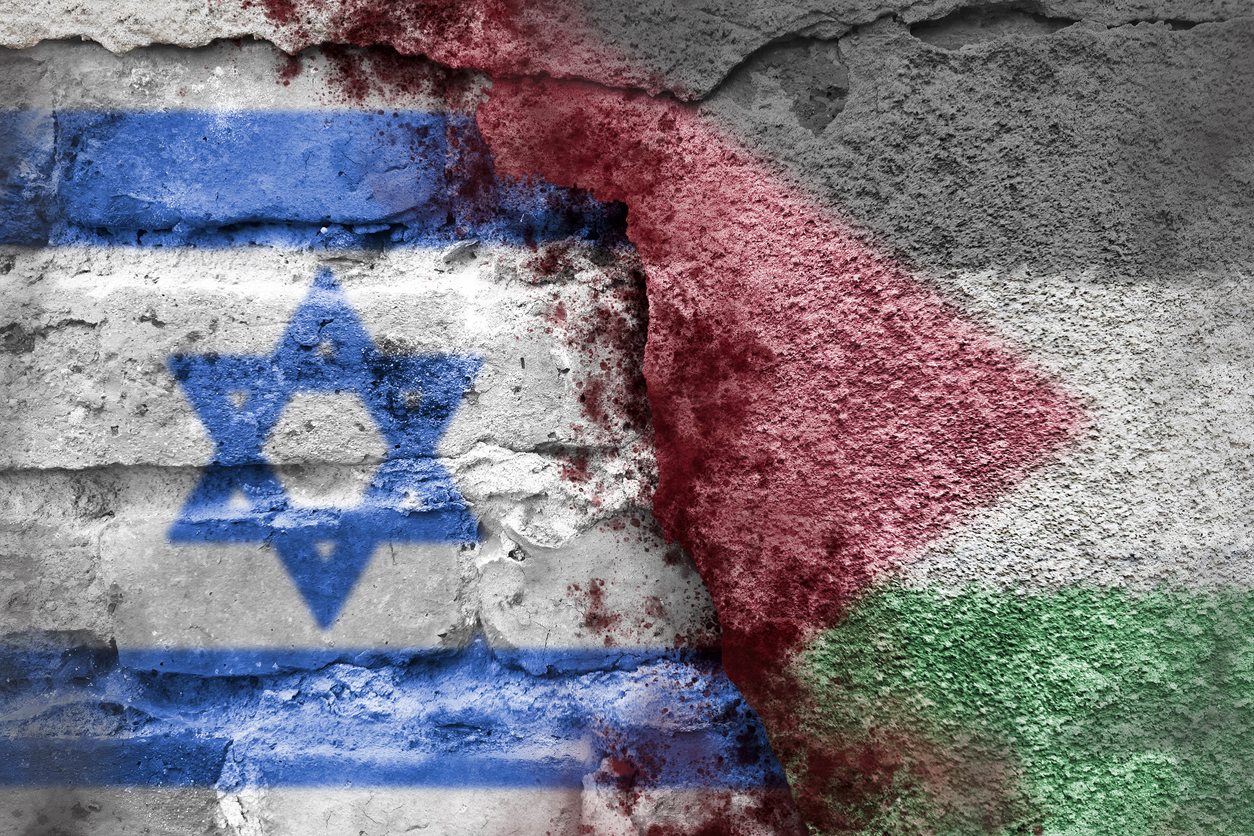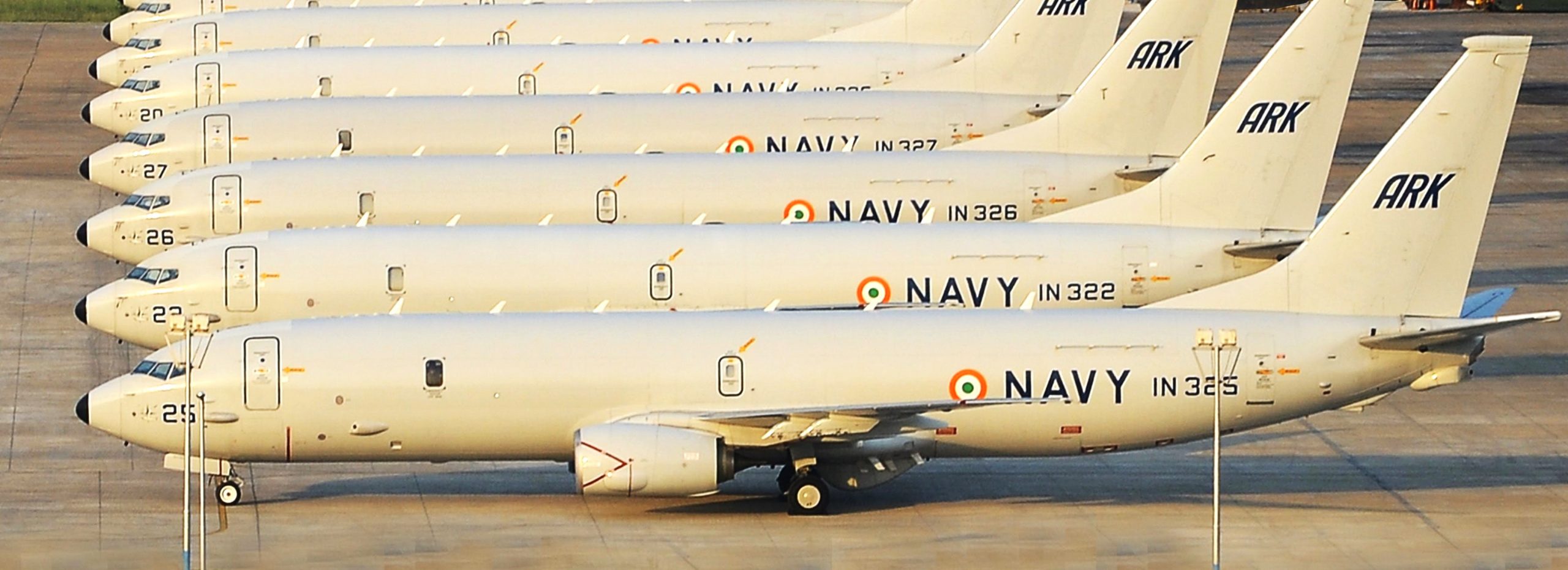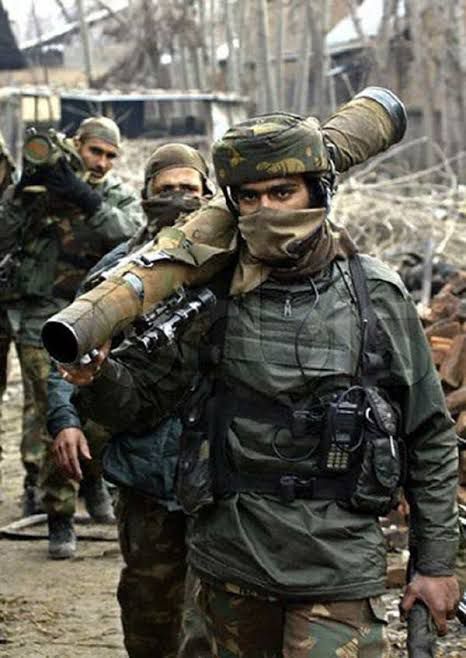
Azerbaijan-Armenia Conflict – The Artsakh Region: Past, Present and the Future
Tue, 20 Oct 2020 | Reading Time: 10 minutes

The mountains of Western Asia, the place where Asian continent meets with Europe and forms the barrier of Eurasia between the Caspian Sea and Black Sea are the home to some of the mighty emblems of Human Civilisation. Welcome to the land of Arafat Mountains- Armenia which is surrounded by Georgia in the north, Azerbaijan in the east, Turkey to the West and Iran in the south.
This region was the centre of attraction of the world for more than three millennia but for the last three decades, Armenian and Azerbaijan forces are locked in one of the bloodiest battles. In the last one month, things have intensified. More than a thousand are already killed, tens of thousands are displaced and the battle is becoming intense with each passing day. Global powers are busy while international Arms suppliers are taking this war as an opportunity to make a few more dollars.
The region has seen the worst in last one century ever since it was declared as an autonomous region by USSR and the bloodshed on the Karabakh Mountain has not stopped since then.
If the war continues, there will be a day when the land with the longest recorded human settlements would be devoid of any human. These were the mountains where the oldest human remains (about 1.7-million-year-old) were found and this region has the history of continuous human settlements since then.
India and Artsakh have a lot in common. As the Indus Valley Civilization of India, Artsakh had been the centre of ancient Shulaveri-Shomu Civilization. Both civilizations were contemporary, both have a similar culture, both flourished in river valleys, both are known for their pottery and beads and the residents of both the civilizations used to worship fire and sun. Archaeologists have found some traces of Shulaveri Shomu Civilisation in the Indus Valley sites which proves that they were connected.
As far as modern religious beliefs are concerned, Artsakh has a long lineage to prove its Christian roots. In the biblical stories, it was the first place where Noah’s descendants settled down after the great flood. The Mount of Arafat is the place where it is said that the legendary Noah’s ark stopped after the great flood. It had been part of the Armenian Kingdom since the very beginning.
The first country to adopt Christianity as State Religion was Armenia in the year 301 AD however the religion was popular in the region even in 70 AD, barely 35 years after the death of Jesus. Most of the Biblical legends speak of Artsakh region in some or the other way.

Map 1.1- Ancient Map of Armenia
Under the Armenian kingdom, Artsakh region had prospered and grown. Armenian people see Artsakh as a symbol of its old heritage. (Refer Map 1.1- Ancient Map of Armenia). This is the primary region why Armenia is hell-bent to fight for the Artsakh region even at the costs of its total annihilation by Islamic Radical Forces led by Azerbaijan and Turkey.
The Armenian-Islamic conflict is not new. It dates back to 639 AD when Abd-Ar-Rehman-Ibn-Rabiah first attacked this region with 18000 Islamic fighters but was defeated and forced to allow Armenia its freedom of religion after his entire army was annihilated. The Islamic attacks continued, one after the other and gradually they were able to convert a sizeable population of western Armenian plains into Islam but when they reached the highlands of Artsakh, all efforts failed and the invaders faced a humiliating defeat. ,

Map 1.2- Armenia under Ottoman Empire
Even during the 700-year-old Ottoman rule in neighbouring Turkey, there were repeated attacks on these highlanders, but none could change the socio-religious status of the people. They remained loyal Christians and repulsed every attack with complete zeal and determination. Even though a large area of Armenia was under the control of the Ottoman Empire- Artsakh region was still out of their control. (Refer Map 1.2- Armenia under Ottoman Empire). This is another similarity with India where Hindu Culture thrived and survived during over 700 years of Islamic Rule.
Not only Sunni dominated Turkey but the Shia dominated Iran also tried to establish their control over the mountains of Karabakh several times but failed until they were defeated in Russo-Persian war in the early nineteenth century. The Persian Rulers, however, succeeded in establishing a strong Islamic empire in current day Azerbaijan where it is still flourishing.
In the early sixteenth century, most of the population of Western Armenia was converted to Islam and the demographic ratio was changed by Ottoman Rulers of Turkey. But it was due to the strong will of these highlanders of Artsakh region who started migrating towards the plains of Armenia in early seventeenth century onwards and established Christianity once again. Present-day Armenia is standing tall as Christian republic only because of these highlanders otherwise it would have been another Islamic Kingdom running under the Shariah law.
The early twentieth century witnessed a transformation when Artsakh-then part of Armenia became an integral element of the Soviet Republic (USSR) which emerged after the victory of Bolsheviks under Vladimir Lenin in the Russian Civil War.
Bolsheviks accepted the will of these highlanders to remain Christian and that’s why during their over 60-year till the dissolution of Soviet Union in the early nineties, they never tried to meddle into their affairs and kept it as Ngorno-Karabakh Autonomous Oblast (NKAO). However, due to their proximity with Azerbaijan, they kept it under the administrative control of Azeri people which led to the problems leading to the conflict as on date.
Today Azerbaijan is the only ex USSR country with the highest percentage of Islamic Population. Surprisingly this percentage is even higher than in Turkey. There is a very high population of Azeri Citizens in the ranks of ISIS, Al-Qaeda and other terrorist organisations as well as radical Islamic groups across the world. It’s a serious change for a country which was dubbed as a secular one till just 3 decades back.
An independence referendum was carried out in 1991 soon after the fall of Soviet Republic and more than 99% of the people staying in Artsakh region voted it to be part of Armenia but despite the one-sided resolution, Azerbaijan refused to accept their will and continued to forcefully claim it as its territory. Azerbaijan first abolished the status of this region as an autonomous zone by passing a resolution in its parliament and then started aggressive Islamic radicalisation of the people of the area. All of this was promoted and sponsored by neighbouring Turkey which was an adversary of Soviets during the decade’s long cold war.

Figure 1.3- Destruction in Artsakh
The highlanders have been fighting to save their own culture, religion and demographic status ever since then and Armenia as a mother country is supporting them in totality. Currently, they are controlling a vast tract of this area and fighting is going on with the Islamic radicals both by day and night.
Since the battle is going on, this region is seen in different perspectives by different countries.
- There is a group of arms exporting countries that see this conflict as an opportunity to sell their arms and equipment and thus will never want this conflict to end.
- There is another group of countries which are acting neutral as they are not affected in any way. They follow the United Nations narrative which keeps the Artsakh region as part of Azerbaijan (the status given by Russia in 1918). Ironically it is the same narrative during the voting of which in the United Nations General Assembly they were absent.
- But there is a third group of countries, which include Turkey and Pakistan, are actively involved in this war and terming it as Jihad – the holy Islamic war. Turkey has a reason- till date, it has not been able to forget the humiliating defeat to its Caliphate in 1918 and hence trying to regain its position as Caliphate’s kingdom ever since then. Be it ISIS, be it Al-Qaeda, be it Afghan Mujahideen or even other Islamic radical groups fighting in Syria, Iraq and other parts of the world, direct or indirect presence of Turkey is perceived.
The third group of countries are the danger we need to consider very seriously. Ever since the war broke out in the region three weeks back, Turkey has dispatched more than 15000 Radical Islamic fighters from Syria, Iraq and even Pakistan to fight against Armenians. Not only this, they are in the process of sending more from different war zones. Unconfirmed inputs suggest that large contingents of Taliban and Lashkar-E-Toiba fighters are also getting dispatched by Pakistani ISI to Azerbaijan since due to the recent truce with the Afghan Taliban; their role is becoming redundant in Afghanistan.
Turkey and other Islamic countries including Pakistan are terming it as a Jihad (Holy War of Islam) and calling fighters from their warzones worldwide to go to Azerbaijan. Turkey has even declared all-out support and has dedicated all its military facilities at the disposal of Azerbaijan.

Figure 1.4- Chechen Fighters in Armenia-Azeri War
The list of foreign Islamic mercenaries fighting by the side of Azerbaijan includes Hizb-e-Islami of Afghanistan, Grey Wolves of Turkey, Syrian National Army backed by Turkey, Islamic State of Iraq and Levant (ISIS) fighters, Uzbek Fighters of Afghanistan, Large chunk of Chechen Fighters, UNA-UNSO of Ukraine and Al-Qaeda operatives which moved out of Afghanistan after the US-led “Operation Enduring Freedom”.
Reliable sources confirmed that more than 20% fighters located in the war zone bordering Artsakh and Armenia are these foreign mercenaries. It is learnt that Pakistan ISI had played a vital role in financing these groups through its Middle Eastern channels and huge funding was given to these groups in the name of so-called Jihad.

Figure 1.5- Tigaranakert Archaeological Site
On 3rd/4th October 2020, these Islamic radical forces shelled an ancient archaeological site dating back to second century BC in Tigranakert. Although there was no human presence in this area, this move of intense shelling resembles the ISIS action to destroy Palmyra and other ancient sites in Syria and Iraq.
This is happening under the nose of a watchful global community with impunity and all in the name of Islam Can we allow it to happen? The situation is critical and needs immediate attention of the world. It is just not a conflict between two countries but also a religious attack on a community to destroy a thriving culture. This is exactly like the Islamic attacks of medieval age in India and other countries which ruined entire northern India. It is exactly like Jewish holocaust by Nazis during the second world war. So far Armenia is all alone in this war but if the global community remains silent, tomorrow it can be any other country of Europe or for that matter Asia too.
The world cannot keep the eyes closed as they did during the voting of the 2008 UN Resolution on the Nagorno-Karabakh Conflict. When we go into the details of this voting, alarming facts are disclosed.
- Out of 193 members of the United Nations, only 46 Countries voted for the resolution. Rest of them totalling 147 members were either absent or refrained from voting.
- Out of these 46 who voted, 39 were in the favour of Azerbaijan while 7 were against it. Out of these 7, India was one of them.
- A most surprising fact is that out of 39 who were standing by these Islamic Radicals, 31 were OIC (Organisation of Islamic Co-operation) Countries. All of them were led by Turkey.
- Five countries held very little significance in this matter and it was obvious that they were influenced by Turkey or other OIC countries. These were Cambodia, Colombia, Myanmar, Serbia and Tuvalu.
- The three countries (Georgia, Moldova and Ukraine) who voted against people of Artsakh are the ones who had disputes with Armenia and close ties with Turkey. Their reaction was understood.
- The seven who were standing strong by Artsakh were Armenia, United States, France, India, Russia, Vanuatu and Angola.
Such a large absence of the member states resulted in the situation what we see today, the mountains where the progeny of Noah once flourished are turning red by the blood of innocent civilians while global arms suppliers are busy minting money.
Recently, Russia led group of countries pushed for a ceasefire between the two countries on 12th October 2020 but within 4 hours of its announcement, Azeri Artillery started pounding the city of Stepanakert (The Capital city of Artsakh) with their guided rockets & heavy calibre guns. (Please see figure 1.6- Damage in Stepenakert.

Another ceasefire was agreed on 17th October 2020 between the two cities but this time the mercenaries fighting on behalf of Azerbaijan broke the truce and thus the war is continuing in Ngorno-Karabakh. The stubborn attitude of the syndicate formed by Turkey, Azeri forces and foreign mercenaries is making it difficult to reach any milestone while innocent citizen are losing their lives.
So, what is the solution to this problem?
Should the global leaders turn their faces as they did in the 2008 UN General Assembly?
Or they wait for some miracle to happen?
Or they wait for Azerbaijan and Armenia to resolve the matter within them?
Strictly no. None of these things will resolve the problem. Currently, the global community is looking at the United Nations with extreme hope. If we think about it, the most globally accepted and permanent solution to this problem can be suggested in the following six steps: –
- First and foremost, the UN should dispatch its peacekeeping force (Comprising of troops from neutral countries) to the war zone and enforce an immediate cease-fire.
- Ensure the withdrawal of forces of both the countries from the war zone so that the people of Artsakh can have some relief.
- Propose another resolution in the United Nations General Assembly about the future of Artsakh region and this time it must be ensured that more than 80% member states are available for voting.
- At the same time, the will of the people of Artsakh to be considered. Their representatives should get a chance to speak about the future of the land which their forefathers nurtured over the last several thousands of years.
- This is just not a territorial conflict; it’s a conflict of two religions, two cultures and two ethnicities. Hence, member states should take adequate caution while voting. What you support today can come knocking at your door tomorrow.
- Once the voting is done, whatever resolution comes out should be enforced under UN guidelines. Key member states like the US, Russia, France etc should play a key role in this.
The global community is confident that if its leaders play a right and legitimate role in resolving this problem, then not only a dying culture but the oldest inhabited region of the world can be saved from further bloodshed. People of Artsakh need immediate attention before it is too late.
Disclaimer
The opinions expressed in this article are the author’s own and do not reflect the views of Chanakya Forum. All information provided in this article including timeliness, completeness, accuracy, suitability or validity of information referenced therein, is the sole responsibility of the author. www.chanakyaforum.com does not assume any responsibility for the same.
Chanakya Forum is now on . Click here to join our channel (@ChanakyaForum) and stay updated with the latest headlines and articles.
Important
We work round the clock to bring you the finest articles and updates from around the world. There is a team that works tirelessly to ensure that you have a seamless reading experience. But all this costs money. Please support us so that we keep doing what we do best. Happy Reading
Support Us




















POST COMMENTS (1)
Jitander